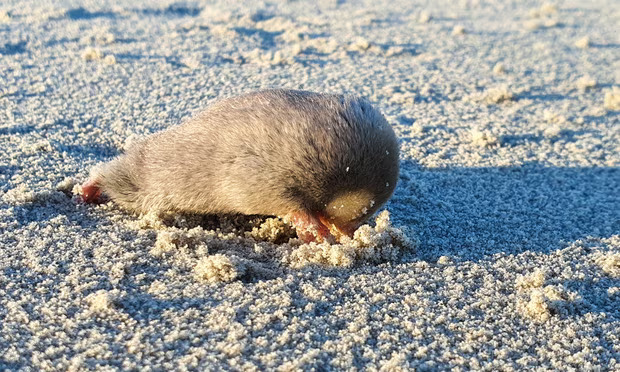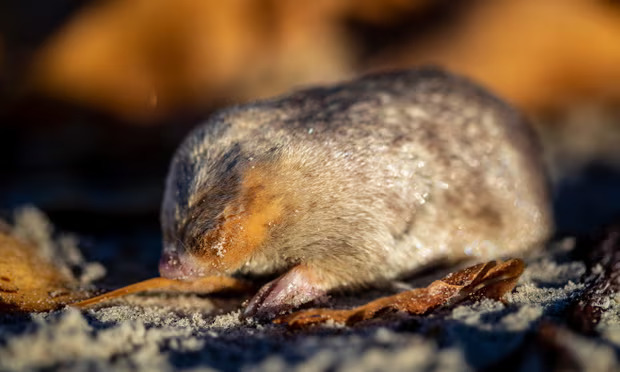Border Collie Jessie Discovers Species Unseen Since 1937 in South African Dunes
Rediscovered near the coastal town of Port Nolloth in north-west South Africa, an elusive and iridescent golden mole, unseen since before the Second World War, has astonished researchers with its sand-swimming capabilities.
The De Winton’s golden mole (Cryptochloris wintoni), once feared extinct, thrives in underground burrows and hadn’t made an appearance since 1937. Its designation as the ‘golden’ mole comes from oily secretions that facilitate sand-dune ‘swimming,’ a distinctive mode of movement that eschews conventional tunneling and amplifies the creature’s elusive nature.
Blind and dependent on its highly sensitive hearing, the elusive golden mole reacts swiftly, bolting at the slightest vibrations caused by movement above ground. This remarkable creature has earned a spot on the ‘most wanted’ list of lost species compiled by the global conservation group Re:wild.
After 86 years since its last sighting, the mole has been rediscovered, thanks to a two-year search conducted by dedicated conservationists and the remarkable skills of Jessie, a border collie trained to sniff out golden moles. The groundbreaking findings have been documented in the journal Biodiversity and Conservation.

Esther Matthew, senior field officer at the Endangered Wildlife Trust (EWT), shared her excitement, saying, ‘Being part of a team searching for lost species was already thrilling. Discovering one was the cherry on the cake.
A collaborative effort between researchers from EWT and the University of Pretoria, aided by the vigilant canine Jessie, unfolded as she signaled discoveries by lying down upon detecting the scent. Jessie’s enthusiasm earned her playtime, chasing after her cherished tennis ball.
At each pause in their journey, the team meticulously collected soil samples, subjecting them to advanced environmental DNA (eDNA) testing. This cutting-edge technique identifies DNA from skin cells, urine, faeces, and mucous, shedding light on the moles’ movement through the dunes. Employing this method, the team traversed extensive dune landscapes, covering up to 18km (11.2 miles) daily, accumulating a total of 100 sand samples, eventually revealing the presence of two De Winton golden moles.
Captured by JP Le Roux/re:wild, striking images documented the tracks left by the adept ‘swimming’ De Winton golden mole through the sand.
Initial field research in 2021 hinted at the mole’s presence, but confirmation awaited genetic sequencing due to visual similarities with other golden mole species. Cobus Theron, senior conservation manager at EWT and a crucial team member, expressed confidence in the species’ survival. He stated, “Now, not only have we solved the riddle, but we have ventured into this eDNA frontier, opening vast opportunities for other endangered species.”
Within the realm of the 21 known golden mole species, predominantly residing in South Africa, the team uncovered evidence of three additional moles, including the endangered Van Zyl’s golden mole.
Post-2021 research, EWT uncovered four more populations of De Winton’s golden moles, signifying a thriving community in Port Nolloth. However, the absence of protection and the looming threat of diamond-mining pose significant risks to this habitat.
Against the backdrop of looming biodiversity challenges by 2050, there is a critical call to pinpoint specific areas for concentrated conservation efforts and secure protected zones, acting as resilient strongholds for endangered species.
